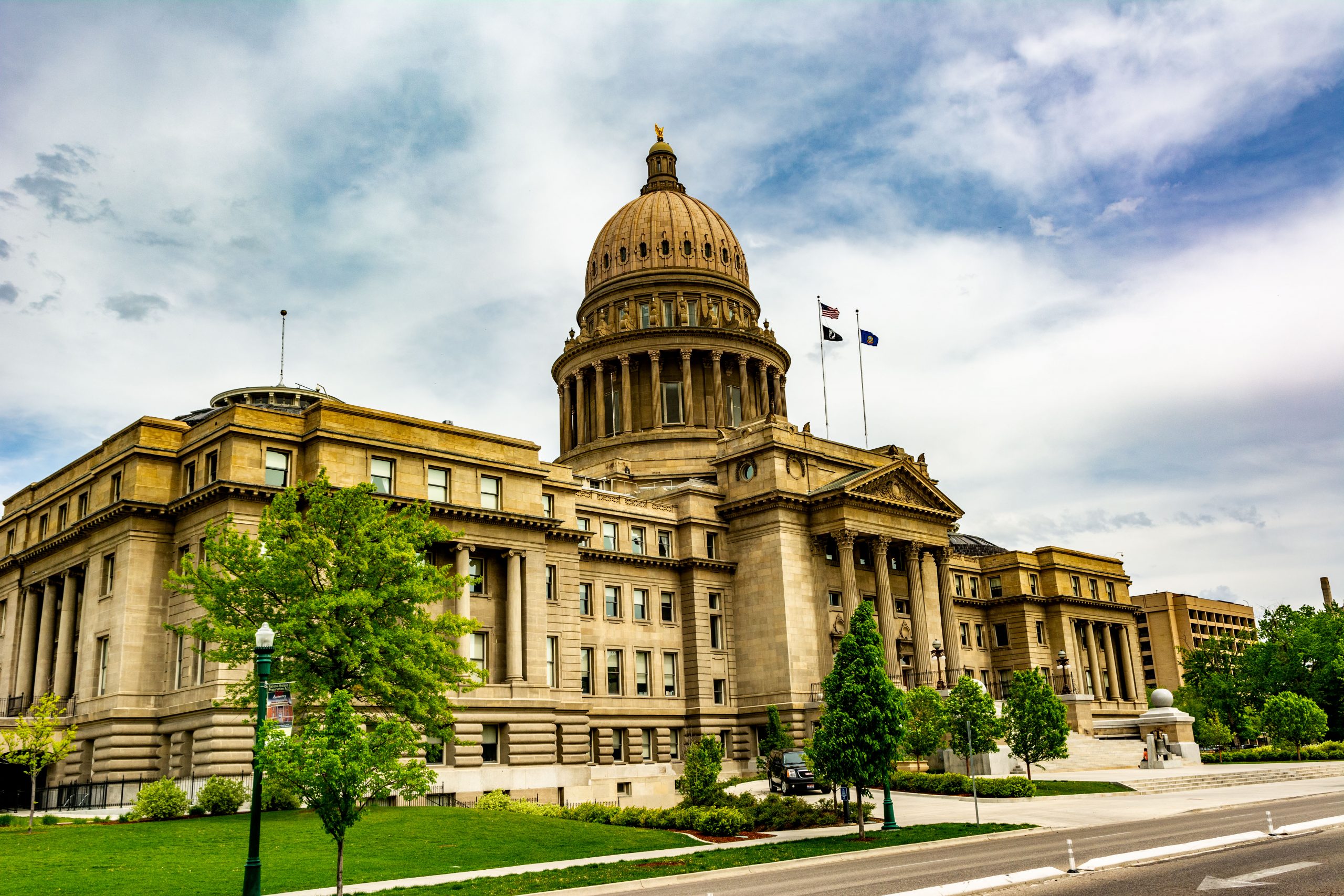Idaho–The Gem State

Boise, Idaho
Lewis and Clark crossed what we now call Idaho–the Gem State in 1805. Historians tell us that they were the first European-Americans to visit the Gem State. Prior to white settlement, many Native peoples lived in the area. Today, five tribes live in the state, from the Kootenai in the north to the Shoshone-Bannock and Shoshone-Paiute in the south. The Coeur d’Alene live along the southern edge of the lake that bears their name, and the Nez Perce live along the Clearwater River.
Idaho’s Native People
Five reservations call Idaho home. The Kootenai Reservation lies outside the city of Bonners Ferry in Boundary County. The tribe owns a casino in that city. Roughly 110 miles south of Bonners Ferry, the Coeur d’Alene Reservation’s headquarters is in Plummer, Benewah County. The tribal casino, named for the tribe, is in Worley. Another 93 miles south will bring you to Lapwai, Nez Perce County, and headquarters for the Nez Perce Reservation. The Nez Perce operate two casinos, The Clearwater River Casino in Lewiston and the It’se Ye-Ye Casino in Kamiah.
There is no easy way to cross the 500 miles from Lapwai to Fort Hall, a community split between Bannock and Bingham Counties in southeastern Idaho. Fort Hall is tribal headquarters for the Shoshone-Bannock tribe. Their cousins, the Shoshone-Paiute have a reservation that crosses the Idaho/Nevada State line,with headquarters in Owyhee, Nevada. The Shoshone-Bannock operate casinos in Fort Hall and Blackfoot, Idaho.
The Oregon Trail, Mormons and Gold–the settling of Idaho–the Gem State
Lewis and Clark may have crossed Idaho in 1805, but the lure of gold brought prospecting European-Americans to the Gem State. The Oregon Trail had people crossing Idaho as early as the 1840s. The arid, volcanic lands attracted few settlers when visions of the lush Willamette Valley drew them westward. Starting in 1860, Mormons began moving north from Utah. They settled in the southeastern corner of Idaho, believing they were still in Utah. But the discovery of gold near Pierce in 1860, and a subsequent discovery near Boise two years later, caused a massive influx of people willing to stay.
Territorial Creation and Division
Taking land from both Washington Territory (west of the Continental Divide) and Dakota Territory (east of the mountains), Idaho Territory came into being on March 4, 1863. At that time, it included all of present day Idaho and Montana and a corner of Wyoming. One year later, Idaho lost over half its land when the U.S. created Montana Territory.
The 1870 Census, the first after the creation of Idaho Territory, counted 14,999 people in the new territory. Twenty years later, when Idaho became a state in 1890, the region had grown to include 88,548 residents. Today, the 2024 Census estimate figures that 2,001,619 people call Idaho home. Boise, the state’s capital and largest city, is hub to the third largest metropolitan area in the Pacific Northwest. Only Seattle and Portland are larger.
The state has 44 counties, listed in alphabetical order in the table below. As I post my county descriptive blogs, those names will become links to the appropriate post. I hope you enjoy your time in Idaho–The Gem State.
| Ada | Adams | Bannock | Bear Lake |
| Benewah | Bingham | Blaine | Boise |
| Bonner | Bonneville | Boundary | Butte |
| Camas | Canyon | Caribou | Cassia |
| Clark | Clearwater | Custer | Elmore |
| Franklin | Fremont | Gem | Gooding |
| Idaho | Jefferson | Jerome | Kootenai |
| Latah | Lemhi | Lewis | Lincoln |
| Madison | Minidoka | Nez Perce | Oneida |
| Owyhee | Payette | Power | Shoshone |
| Teton | Twin Falls | Valley | Washington |
![]()
